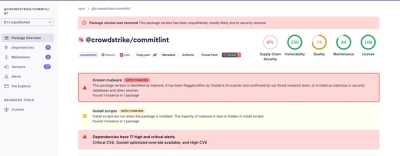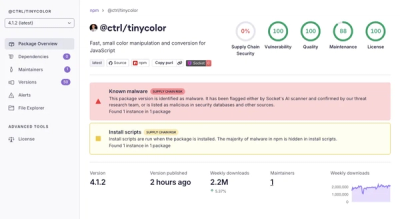@gasket/nextjs
Gasket integrations for Next.js apps. Provides several tools:
- request: Access a request-like object in server components
- withGasketData: Injects Gasket Data added during lifecycle into Document
- withGasketDataProvider: Provides context access to Gasket Data
- useGasketData: Allows access to Gasket Data from hook
Installation
npm i @gasket/nextjs
Functions
request
Get a normalized GasketRequest unique to the current request in server components.
This uses the Next.js cookies() and headers() dynamic functions.
Signature
await request(params?: object): GasketRequest
Props
[query] - (object) Optional query object
Many GasketActions are designed to be unique to requests.
When using ServerComponents with Next.js, the incoming request object is not
fully accessible.
This function provides a way to get a normalized request-like object
that can be used with GasketActions from ServerComponents.
Example
import { request } from '@gasket/nextjs/request';
import gasket from '../gasket.mjs'
export default async function MyPage(props) {
const req = await request();
const something = await gasket.actions.getSomething(req);
return <div>{ something.fancy }</div>;
}
The req will be a GasketRequest with headers and cookies.
If a query object is passed in, it will be added to the request object as well.
For server components, dynamic routes params are available via props, and can
be passed to the request function to make those path params available as the
query.
import { request } from '@gasket/nextjs/request';
import gasket from '../gasket.mjs'
export default async function MyDynamicRoutePage({ params }) {
const req = request(params);
const something = await gasket.actions.getSomething(req);
return <div>{ something.fancy }</div>;
}
Components
withGasketData
Use this to extend your Next.js Document to automatically inject a script containing the gasketData for use with
the @gasket/data package.
Signature
withGasketData(options)(Document)
Props
[options] - (object) Optional configuration
index - (number) Force the script to be inject at a certain child index of the body
Example
This is the simplest and most common setup:
import Document from 'next/document';
import { withGasketData } from '@gasket/nextjs/document';
import gasket from '../gasket.js';
export default withGasketData(gasket)(Document);
By default this will inject the script in the <body/> after the Next.js
<Main/> component, but before <NextScript/>. This also works for a
custom Document.
Example forced index
However, there may be situations where you want to inject the gasketData
script at a particular child index of the <body/>. To do so, you can set the
index in the decorator options.
import Document, {Html, Head, Main, NextScript} from 'next/document'
import { withGasketData } from '@gasket/nextjs/document';
import gasket from '../gasket.js';
class MyDocument extends Document {
static async getInitialProps(ctx) {
const initialProps = await Document.getInitialProps(ctx)
return {...initialProps}
}
render() {
return (
<Html>
<Head/>
<body>
<Main/>
<footer>Some custom content</footer>
<NextScript/>
</body>
</Html>
)
}
}
export default withGasketData(gasket, {index: 2})(MyDocument);
In this example, the gasketData script will be injected after the custom
<footer/> instead of right after <Main/>.
This is especially useful if you are somehow nesting or extending the <Main/>
and <NextScript/> components and the decorator cannot find the right place to inject the script.
withGasketDataProvider
Use this to allow gasket data to be accessed with the useGasketData hook. This is SSR
and client side friendly and can be added at the app level or component level.
Example
import { AppProps } from 'next/app';
import { withGasketDataProvider } from '@gasket/nextjs';
import gasket from '../gasket.js';
const Root = ({ Page, pageProps }) => {
return (
<Page {...pageProps} />
);
};
export default withGasketDataProvider(gasket)(Root);
useGasketData
Use this hook to access the gasketData provided by the withGasketDataProvider hoc.
Example
import { useGasketData } from '@gasket/nextjs';
export const MyComponent = (props) => {
const gasketData = useGasketData();
return (
<>
<div>{gasketData.something}</div>
<div>{gasketData.here}</div>
</>
);
};
How it works
During server side rendering, lifecycles' data can be added to the gasketData property. When the withGasketData hoc is added to a custom Next.js _document, the gasketData is added to the rendered html inside a script tag.
The withGasketDataProvider can be added to a Next.js custom _app or react component. This HOC will capture the gasket data from server side gasketData property or the script tag that was rendered to the html. If Next.js is preforming a SSR the data will come from the gasketData property, otherwise the data will come from the script tag. The withGasketDataProvider hoc will then create a provider and inject gasket data into a context that can be consumed by the useGasketData hook.
The useGasketData will provide access to the gasket data within the context of the withGasketDataProvider, allowing data to be used within any react component.
Please see @gasket/data docs for examples on adding data during SSR lifecycle
License
MIT



